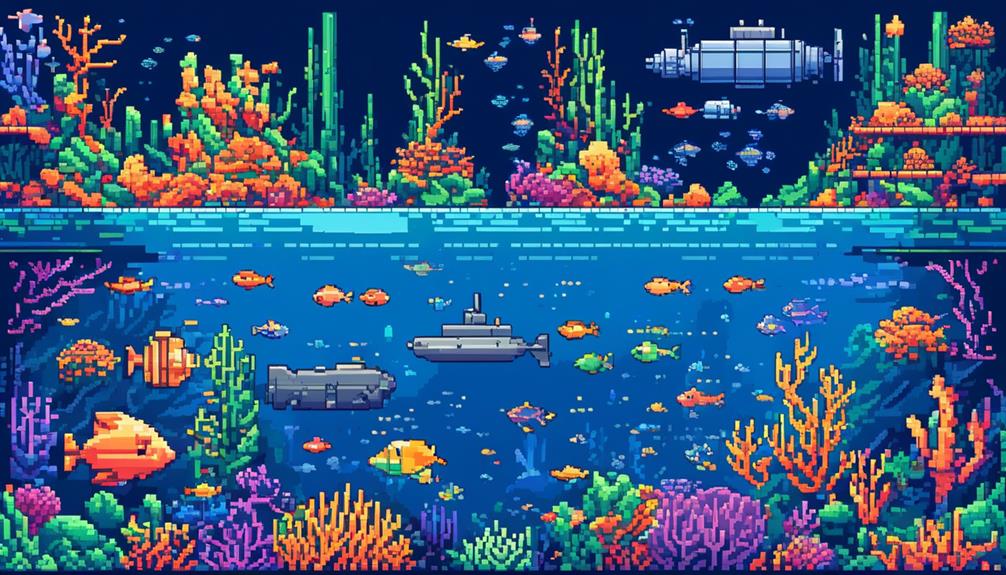Submarine fiber optic cables have revolutionized global communication by seamlessly connecting continents and enabling the transfer of vast amounts of information at incredible speeds. These sophisticated cables, crafted from resilient glass fibers and utilizing cutting-edge fiber-optic technology, have become the backbone of our interconnected world.
However, the story goes beyond the mere physical infrastructure; it delves into the fascinating history of these cables, the intricate network of cable landing stations, the key players investing in this technology, and the implications for environmental sustainability, security, and regulation.
As we delve into the intricacies of submarine fiber optic cables, we uncover a captivating world that shapes the future of global connectivity.
Key Takeaways
- Submarine fiber optic cables have a long history, evolving from telegraph wires to advanced technology in 1988.
- They are composed of glass fibers encased in marine-grade polyethylene, with protective outer layers to withstand harsh ocean conditions.
- Cable laying involves precise navigation and placement on the ocean floor, and cable repair teams ensure continuous connectivity.
- Private companies, tech giants, and government entities dominate ownership and investment in submarine cables, with regulatory bodies overseeing their installation and protection.
History of Submarine Cables
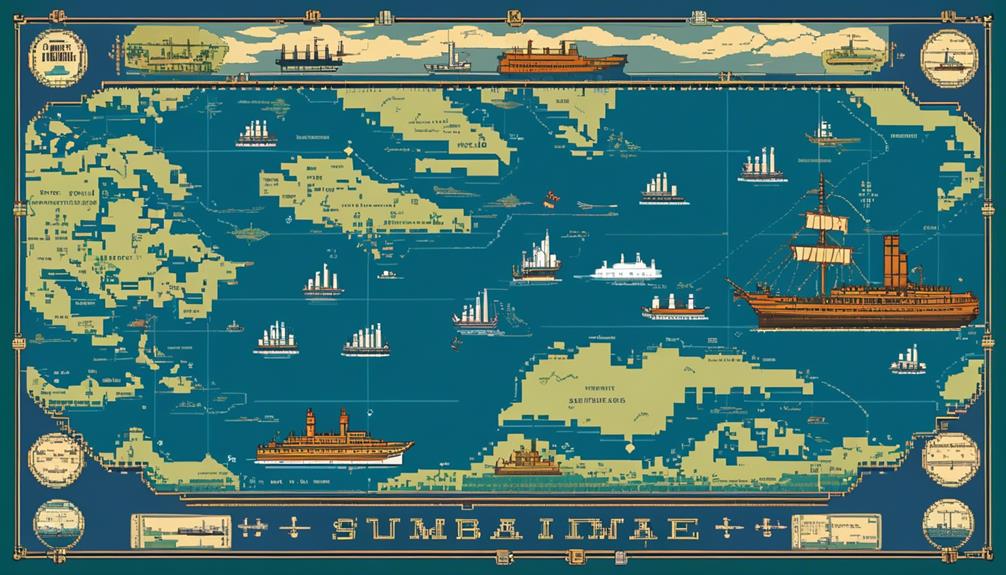
The history of submarine cables dates back to 1858 when the first undersea telegraph cable was laid between Ireland and Newfoundland by the ship Great Eastern. This monumental achievement marked the beginning of a new era in global communication.
Over the years, undersea cables have evolved from simple telegraph wires to advanced fiber optic cables that enable the transmission of vast amounts of data at high speeds.
In 1956, the first transatlantic telephone cables were put into service, revolutionizing submarine telecommunications. These early cables were made of copper and had limited capacity. However, advancements in technology led to the introduction of fiber optic cables in 1988, which greatly enhanced the capabilities of undersea communication. These cables, consisting of thin strands of glass known as optical fibers, can transmit data over long distances with minimal signal loss.
Today, undersea cables form a vast network that spans across the world's oceans, connecting continents and facilitating global communication. Cable landing stations, strategically located along the coastlines, serve as the entry and exit points for these undersea cables. From these stations, the data is then routed to various destinations through terrestrial networks.
Undersea cable networks have become the backbone of international communication, carrying over 95% of the world's communications. They are the fastest, most efficient, and cheapest way to transfer information across the ocean. The trans-Atlantic cable, connecting Europe and America, is one of the most critical links in this global network. It enables seamless communication between continents and supports various industries, including finance, healthcare, and entertainment.
Structure of Submarine Fiber Optic Cables
The structure of submarine fiber optic cables involves specific cable construction techniques and the addition of protective outer layers. These cables are typically composed of glass fibers encased in marine-grade polyethylene with steel strength members, copper conductors, and a glass fiber core.
The protective outer layers are designed to withstand the harsh ocean environment and ensure the integrity of the optical transmission.
Cable Construction Techniques
Constructed in specialized factories using advanced machinery, submarine fiber optic cables are meticulously engineered to withstand the harsh and unpredictable conditions of the ocean environment. These undersea cables play a crucial role in connecting continents and forming the backbone of the global network. The construction of submarine cables involves several techniques, including cable laying and cable repair. Cable laying is a complex process that requires precise navigation and careful placement of the cable on the ocean floor. In case of damage or faults, cable repair teams utilize submarine cable technology to locate and fix the issues, ensuring uninterrupted connectivity. Transoceanic cables, with their robust structure and advanced technology, enable the seamless transmission of data across vast distances, making the world a more interconnected place.
| Cable Construction Techniques | Purpose |
|---|---|
| Cable Laying | Precise navigation and placement of cables on the ocean floor |
| Cable Repair | Locating and fixing faults or damages to ensure uninterrupted connectivity |
Protective Outer Layers
After undergoing meticulous engineering in specialized factories, submarine fiber optic cables are encased in protective outer layers to withstand the harsh and unpredictable conditions of the ocean environment. These protective layers, typically made of marine-grade polyethylene with steel strength members, copper conductors, and a glass fiber core, ensure the integrity and longevity of the undersea cable network.
The cables, which are about the size of a thick garden hose when finished, are designed to last up to 25 years. The protective outer layers not only shield the cables from physical threats such as heavy currents, rock slides, and interference from fishing trawlers but also provide additional protection against cable faults.
Specialized maintenance ships and crews are responsible for the upkeep and repair of the submarine fiber optic cables, ensuring that they remain operational even in the most challenging conditions. Branching units are strategically placed along the cables to facilitate communication between continents, while additional protective measures are implemented in shallow waters to safeguard the cables from potential damage.
Cable Landing Stations and Global Connectivity
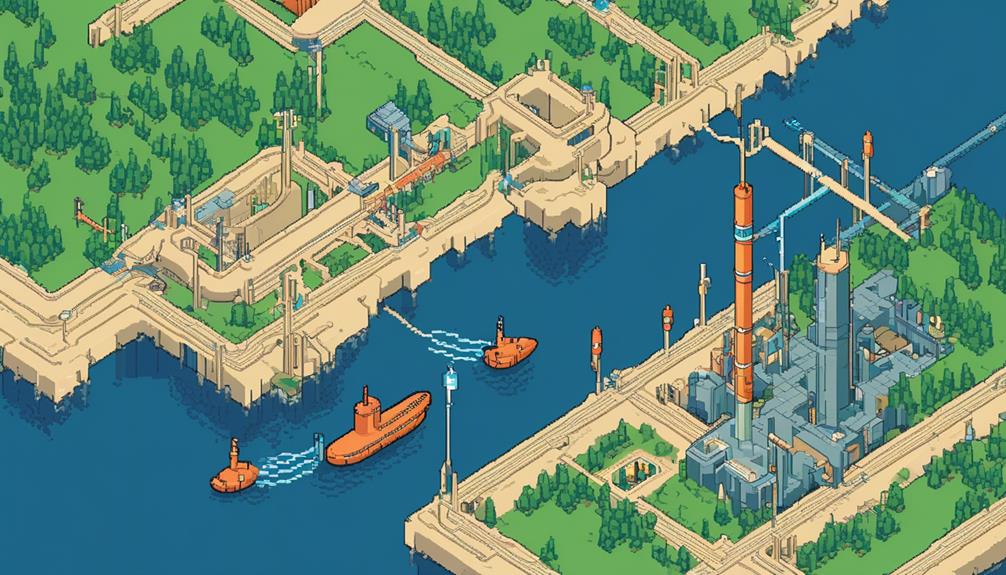
Cable landing stations are strategically located along coastal areas to serve as the interface between undersea cables and terrestrial networks, enabling intercontinental data transmission.
These stations play a critical role in ensuring global connectivity by providing a gateway for seamless communication between continents.
The redundancy of these cable landing stations is of utmost importance to maintain uninterrupted data transmission and to safeguard against potential disruptions.
Landing Station Locations
Landing stations serve as crucial transition points where submarine fiber optic cables connect to land-based infrastructure, enabling global connectivity while minimizing underwater hazards. These stations are strategically located to ensure efficient and secure connections between continents. They provide the necessary infrastructure for the cable to transition from under the water to land, connecting to power and networking provider infrastructure.
The location of landing stations is carefully chosen to minimize marine traffic and potential disruptions. These facilities are often secure and protected to ensure the integrity of the submarine cable network. Environmental impact assessments are conducted prior to installation to minimize any negative effects, and in some cases, specific sections of the cable route may become dedicated marine conservation zones.
The table below highlights the importance of landing station locations in global connectivity:
| Key Points | ||
|---|---|---|
| Strategic location | Secure facilities | Minimize marine traffic |
| Transition from undersea to land | Connect to power and networking infrastructure | |
| Environmental impact assessments | Potential marine conservation zones |
Intercontinental Data Transmission
Intercontinental data transmission is facilitated through cable landing stations, which serve as crucial points where undersea cables connect to land-based infrastructure, ensuring seamless global connectivity.
Here are three key aspects of intercontinental data transmission:
1) Global Undersea Network: Undersea cables form a vast global network that connects continents and enables the transmission of vast amounts of data. These cables are made of submarine fiber optic cables, which carry data through pulses of light.
2) Trans-Atlantic Cable: The trans-Atlantic cable, also known as the trans-Atlantic telegraph cable, was the first undersea cable system that connected Europe and North America. Today, transatlantic fiber optic cables support high-speed data transmission for various applications, including transatlantic telephone calls and internet connectivity.
3) Importance for Global Communication: Undersea cables play a vital role in supporting global communication and data transmission. Internet giants like Facebook, Google, Microsoft, and Amazon have invested heavily in undersea cables to ensure reliable and fast global connectivity.
Through these undersea cables and cable landing stations, intercontinental data transmission has become faster, more efficient, and essential for connecting continents and enabling global communication.
Importance of Cable Redundancy
The seamless global connectivity provided by intercontinental data transmission relies heavily on the crucial element of cable redundancy and the vital hubs of cable landing stations. Submarine fiber optic cables, connecting continents and forming the backbone of the global network, are susceptible to damage or faults. In such cases, cable redundancy plays a pivotal role in ensuring uninterrupted data transmission.
Cable landing stations, strategically located at the landing points of undersea cables, serve as the interface between these cables and the land-based infrastructure. They enhance global connectivity by providing the necessary infrastructure for data transmission. Redundant cable routes and landing stations are essential to maintain seamless communication and internet connectivity during crises or cable damage.
Investment in cable redundancy and landing stations is therefore crucial to meet the increasing demand for bandwidth and ensure the reliability of global communication networks, especially in transatlantic routes. Additionally, proper cable maintenance and regular monitoring are necessary to identify and resolve any potential issues promptly.
Ownership and Investment in Submarine Cables
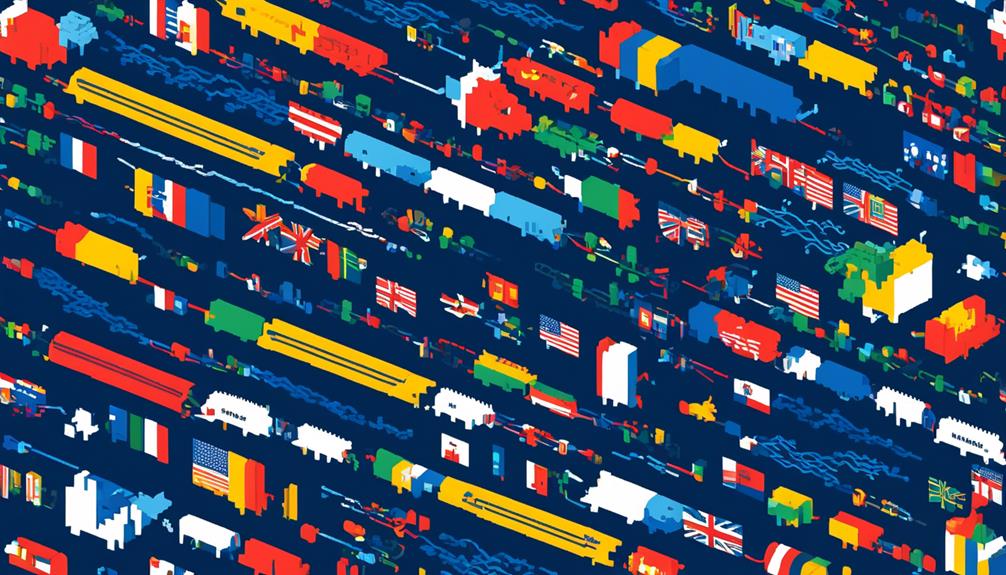
Private investors overwhelmingly dominate the ownership and investment landscape of submarine cables, with government entities also holding partial ownership stakes.
The global undersea network of submarine fiber optic cables, connecting continents and facilitating international communication, is primarily owned by private companies. These companies finance the installation and maintenance of submarine cables, with capacity being sold as annual leases.
Here are three key points about ownership and investment in submarine cables:
- Private Ownership: Private companies, including tech giants like Google, Amazon, Facebook, and Microsoft, have invested heavily in submarine cables. Their contributions have significantly influenced the ownership and investment landscape of this infrastructure.
- Consortiums: Consortiums of owners and investors operate and maintain submarine cables. These consortiums share the cost of cable installation and maintenance, ensuring the efficient functioning of the global undersea network.
- Government Involvement: While private investors dominate ownership, government entities also play a role in the submarine cable industry. Some cables are owned or partially owned by government entities, reflecting their interest in maintaining secure and reliable communication infrastructure.
Regulatory bodies, such as the Federal Communications Commission (FCC) in the United States and the International Cable Protection Committee (ICPC), oversee submarine cables. The ICPC establishes standards for cable installation and protection, ensuring the sustainability and longevity of these vital communication links.
The ownership and investment landscape of submarine cables is a dynamic and evolving space, driven by private sector investment and government involvement. This collaboration between private companies and government entities ensures the continued expansion and improvement of the global undersea network, enabling seamless communication between continents.
Environmental Impact and Sustainability
With a focus on environmental impact and sustainability, the installation and maintenance of submarine fiber optic cables are carefully conducted to minimize disruption to marine life and ecosystems. Before the installation of submarine cables, environmental impact assessments are carried out to ensure that the process has minimal negative effects on the surrounding environment. These assessments take into account the potential impact on marine life and ecosystems, and measures are put in place to mitigate any potential risks.
Submarine cable landing stations, where the cables make landfall and transition from under the water to land, are secured facilities that adhere to strict environmental regulations. These stations are designed to minimize any potential harm to the environment and ensure that the cables are protected and well-maintained.
Cable protection zones are established to serve as marine wildlife sanctuaries and minimize the impact on marine life. These zones are carefully planned to avoid sensitive areas and to provide a safe environment for marine organisms to thrive. By creating these protected areas, the industry aims to ensure the sustainability of marine ecosystems.
Environmental impact and sustainability are critical considerations in the construction, maintenance, and expansion of undersea cable networks. Efforts are made to improve the efficiency of the cables, reduce power consumption, and explore alternative energy sources for powering the networks. Additionally, ongoing research and development focus on creating more environmentally friendly materials and manufacturing processes for submarine cables.
Security and Regulation of Submarine Cables
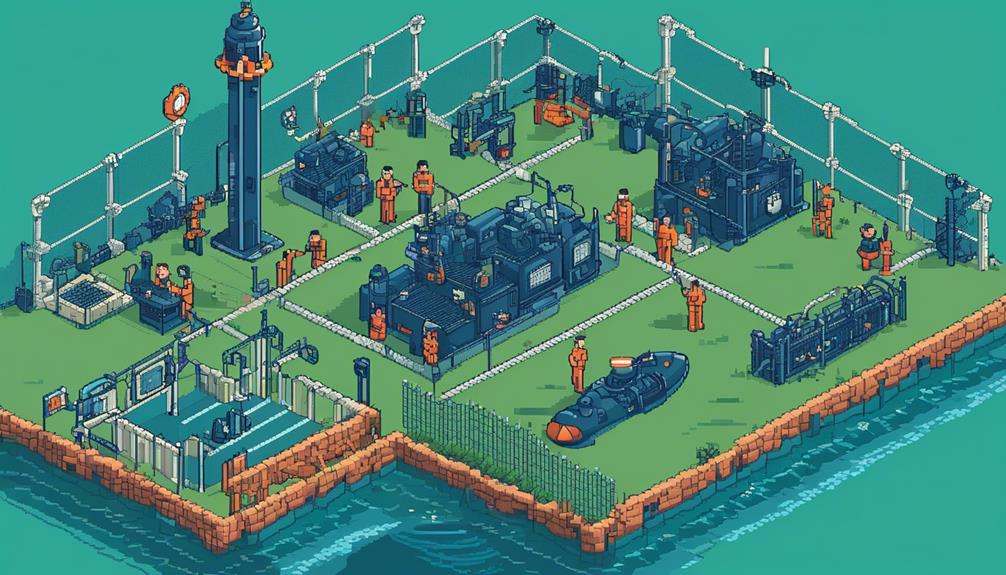
Ensuring the security and regulation of submarine cables is of paramount importance in maintaining reliable and uninterrupted connectivity for global communication networks. Submarine fiber optic cables, which connect continents and form the backbone of our undersea network, carry vast amounts of global data and information.
To protect this critical infrastructure, several measures are in place:
- Physical Security: Cable landing stations, where the submarine cables connect to land-based infrastructure, are secured to safeguard against unauthorized access and tampering. These stations are protected with surveillance systems, restricted access controls, and physical barriers to prevent damage or interference.
- Cybersecurity: Submarine cables are vulnerable to cybersecurity threats, including hacking and data interception. To mitigate these risks, encryption techniques are employed to secure the transmission of data over the cables. Additionally, advanced monitoring systems are used to detect any suspicious activities or breaches in real-time.
- Regulation and Protection Zones: International regulations govern the laying and operation of submarine cables to ensure their proper functioning and protection. Protection zones are designated to prevent activities that could damage the cables, such as fishing or anchoring. These zones serve as a buffer to safeguard the cables from accidental or intentional harm.
Frequently Asked Questions
How Do Submarine Cables Connect the World?
Submarine cables play a crucial role in connecting continents and facilitating global communication. Through constant technological advancements, these cables have become more efficient, enabling high-speed data transmission across vast distances. This has had a significant economic impact by facilitating international trade and enabling internet connectivity even in remote areas.
However, laying submarine cables also requires careful consideration of environmental impacts. Additionally, the maintenance and repair of these cables pose challenges, and ensuring the security of submarine cable networks remains a priority.
The future of submarine cable technology lies in international collaboration and its potential for undersea exploration.
Do Underwater Wires Connect Networks Across Continents?
Underwater wires, specifically submarine fiber optic cables, play a crucial role in connecting networks across continents. These cables utilize advanced technology to transmit data through pulses of light, offering numerous benefits such as high-speed connectivity and large bandwidth capacity.
However, laying these cables presents challenges due to underwater hazards and the need for specialized ships and contractors. Despite these challenges, submarine cables have a significant economic impact, enabling global communication, advancements in technology, and disaster recovery capabilities.
The future holds further advancements and considerations for environmentally-friendly installation and maintenance.
What Is the Purpose of Underwater Cables Between Continents?
Underwater cables between continents serve the purpose of facilitating global communication by providing the fastest, most efficient, and cost-effective means of transmitting information across oceans. These cables play a crucial role in supporting international trade and contribute to GDP growth.
However, their installation and maintenance pose challenges, and the environmental impact of submarine fiber optic cables must be considered.
Future advancements in submarine cable technology will further enhance their capabilities. Additionally, the protection of undersea cables is essential for ensuring security, disaster management, and improving internet connectivity in remote areas.
What Was the Undersea Cable That Linked the World?
The undersea cable that linked the world is the undersea telegraph cable laid in 1858 between Ireland and Newfoundland by the ship Great Eastern. This cable holds historical significance as it marked the beginning of global communication.
Submarine fiber optic cables now play a crucial role in global communication, providing fast and efficient transfer of information across continents. They have significant economic impact, enabling seamless internet connectivity and facilitating data-intensive activities. However, their maintenance and repair pose challenges, and they also have environmental considerations.
Advancements in technology continue to improve their performance, and future prospects and developments hold promise for further connectivity and expansion.
